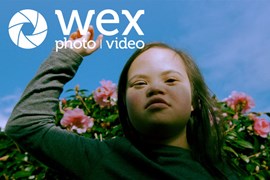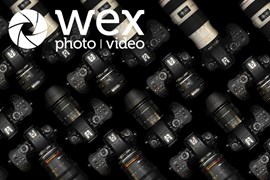
Up until recently, AI has been a godsend for photographers and filmmakers. AI technology drives autofocus, auto-camera settings, filters, editing software, subject selection - the list goes on… But as we all know, AI is changing. It’s developing at an alarming rate - in directions that have the potential to damage the essence of creativity. But is there a case that suggests it could expand and even improve creativity?
For all the good that AI offers the average image-taker, there’s an emerging sense of apprehension for professional photographers and filmmakers across the industry. AI is blurring the lines between conscious decision-making and enhanced manipulation. But equally, there are some who can wholly benefit from AI’s assistance without breaking moral boundaries.
So, does AI belong in the creative world? Is it helping or hindering creative expression? Are there ways to snuff out those who use it for nefarious means?
Limitations to creative expression
When exploring AI’s current limitations with creative expression regarding photography and filmmaking, it seems obvious why there could be and is an issue. AI software such as DALL-E or Midjourney is limited in its ability to understand the prompts we give it, and therefore struggles to produce art that is truly innovative, emotional or meaningful - in my opinion, it lacks soul. While some examples can be particularly convincing and impressive, AI art inherently lacks the depth, nuance and uniqueness of photography or film made by a human being. You may think that AI can be asked to be as genuine or unique as possible, but by (current) design, it cannot because it constructs or alters images from content that already exists.
To play devil’s advocate, many have and will continue to argue that (even before AI) we’re at a point where there isn’t a photo that hasn’t already been taken. And therefore, there are no unique photos. We take inspiration and influence from other artists and image-takers - we imitate styles and methods - are we any different from AI?
For those experimenting with AI’s creative abilities, there are often tells - signs that a photo is fake. For example, it has been widely observed that AI struggles to generate hands or fine details. Hands are often seen much larger or smaller than they should be (or with the occasional extra digit.)
The threat to human creativity and originality
Despite AI’s current limitations, AI is forever learning and improving. By design, it can only get more intelligent and thorough. Put in the wrong hands, it’s an uncontrollable force of perception, repetition and growth. From a creative perspective, this poses a huge threat to human creativity and originality.
The more advanced AI becomes, in theory, the less effort a person would need to put into their craft. Of course, this depends on the artist. A purist wouldn’t see the need to aid their creative process - they may even see it as an attack on their ability to come up with unique and original ideas. It also poses the risk that there can be fewer opportunities for recognition for emerging artists.
Even in its relatively early stages (in this industry, at least), AI has saturated the market. There is already a multitude of AI photography and film out there, some of which are difficult to discern from human-made versions. It is this that will inevitably make it harder for those who don’t use it, to stand out among the crowd and gain traction for their work.
Moreover, as AI develops, it will be easier for businesses to simply use AI to produce marketing imagery, etc. instead of hiring someone with skills or paying freelancers. This poses the problem that AI image generators could and will affect emerging/working artists’ ability to earn money, particularly if AI is used to replace or imitate original artwork.
Ethical implications
As mentioned previously, a purist might not see the need for an aid to their creative process. But there may be those who see the potential to exploit the technology to copy or imitate the work of those who have put in the time and effort to develop their ideas and craft.
Even in its current state (despite the odd additional finger), AI can be used to imitate famous photographers' work. Given either a suitably diligent set of prompts or even feeding in an image of your own with a request to look at the work of another, AI can copy and replicate a style. Is this different to adding a filter or preset onto your photo or film in post-production? Absolutely; plagiarism is not the same as taking influence, regardless of the intention.
Adding a filter or preset is a conscious and personal decision to alter an image. You can choose to take influence or inspiration from an artist's work - this is an essential part of developing your style and can be seen as complimentary!
But there are those among us who would seek to benefit from the work of others. And in this creative world, imitating or replicating the artwork of existing artists can devalue their contributions to the industry and/or undermine their legacy.
The benefits of AI
The main theme discussed here is how AI can be, and is, used to replicate, copy or steal imagery which ultimately may damage human creativity and originality. But what about the positives of AI for photographers and filmmakers? There are several angles and it all depends on how we utilise it.
Despite the aforementioned potential theft of creativity, there is an emerging use that is more productive and beneficial to working creatives. This includes the use of AI image generators to come up with mood boards for shoot concepts, storyboards or even mock-ups for set design.
An example of this could be, from a filmmaker's perspective, you can ask AI to create a storyboard in a particular style. You could ask it:
“I want you to make a film storyboard about cups in the style of Bridgerton.”
(I wonder what that would look like…?) Used as a conceptual tool, AI will be able to create that storyboard and allow you to share that vision with the client. The filmmaker will still have to plan, organise and shoot the film, but AI has been used to help develop the concept.
Another perspective is that AI in this manner is relatively new but it’s been implemented for photography and film for decades. Remember, it’s AI that drives your super-fast and precise AF. AI that locks onto a bird in flight, allowing you to get that pin-sharp shot. AI that automatically selects, masks and removes unwanted eye sores in your photos.
So, what does this all mean?
For this writer and photographer, it’s about using AI responsibly. Spanning into other areas of AI such as content writing; if at all, AI needs to be used as a tool for our own creative development.
There should be clear boundaries of where AI can and should be used. For photography and filmmaking, AI can and should be used to help you develop and convey ideas and concepts for yourself or clients. We should make use of the AI technology that is integrated into our cameras and editing software to increase our productivity so we can capture more and improve our work.
We ask these questions but whether we like it or not, there’s no way to stop it. AI is here to stay and we need to proceed with care and responsibility.
About the Author
Leo White has been a member of the Wex Photo Video team since 2018, working in a variety of roles ranging from the contact centre to the product setup team. With both a photography BA and MA, Leo has a wealth of knowledge he's ready to share.
Check out our interviews...
Buying Guides







